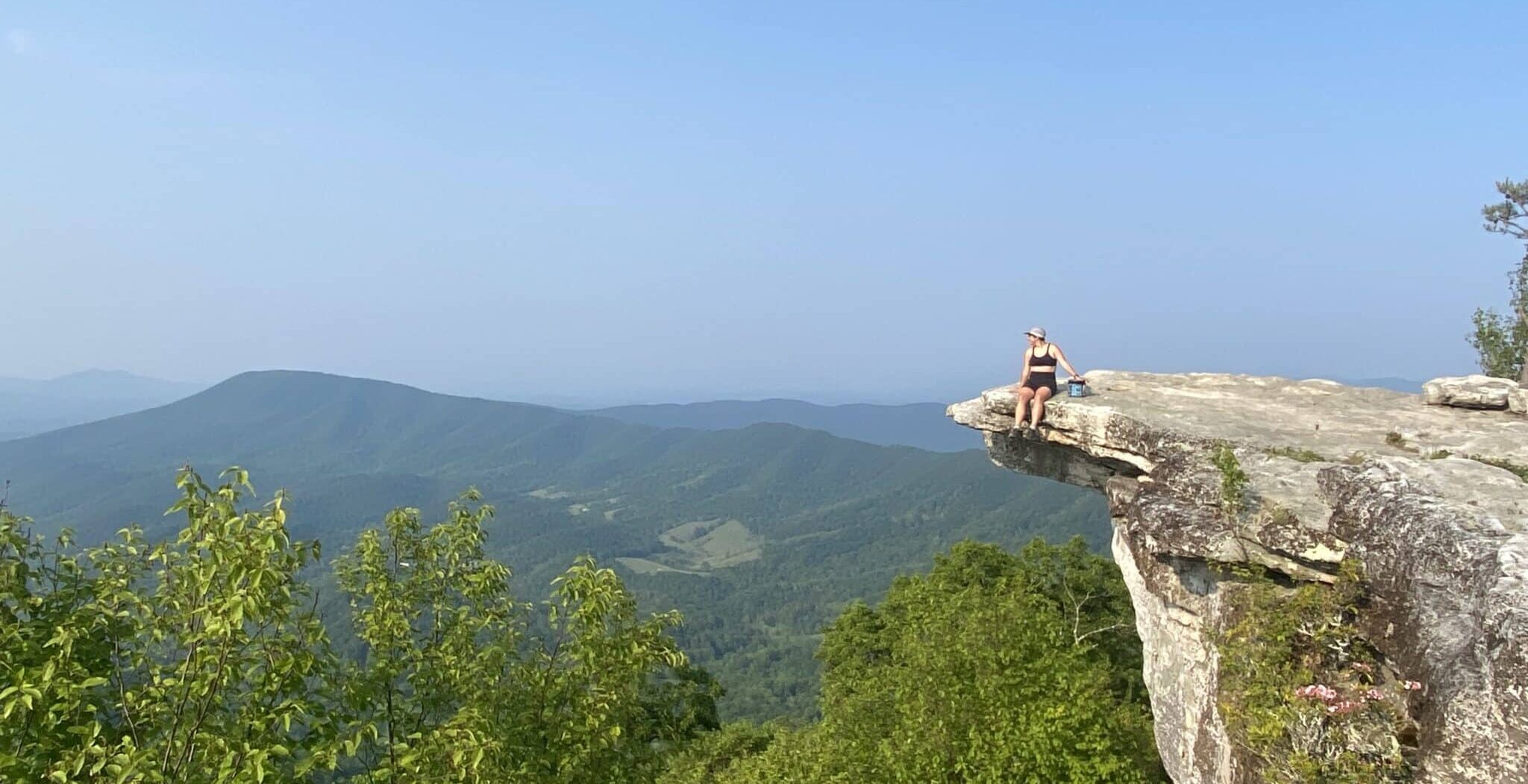
On Honey Buns and Olive Oil: Thru Hikers and Our Food
- Meital Kupfer

The decision to undergo a thru hike is not an easy one. There are many things to consider, from food storage to shelter to your pack to the shoes you will inevitably wear down (multiple times). These choices and related opinions are incredibly contentious among hikers but more prevalent are the questions and disbelief you may encounter in your closest friends and family.
Throughout the preparation for and the duration of my ongoing AT thru attempt, the most questions I field from family, friends and strangers I meet while I frantically resupply at a local grocery store revolve around the most important thing on trail: what we eat. Fueling the ten, twenty, or even the odd thirty-mile day on trail requires a careful selection of foods that can both easily be carried but also caloric enough to power through long and sweaty days. Your decisions are going to come down to careful inspection of the nutrition labels as well as the heft of a peanut butter jar versus the marshmallow fluff.
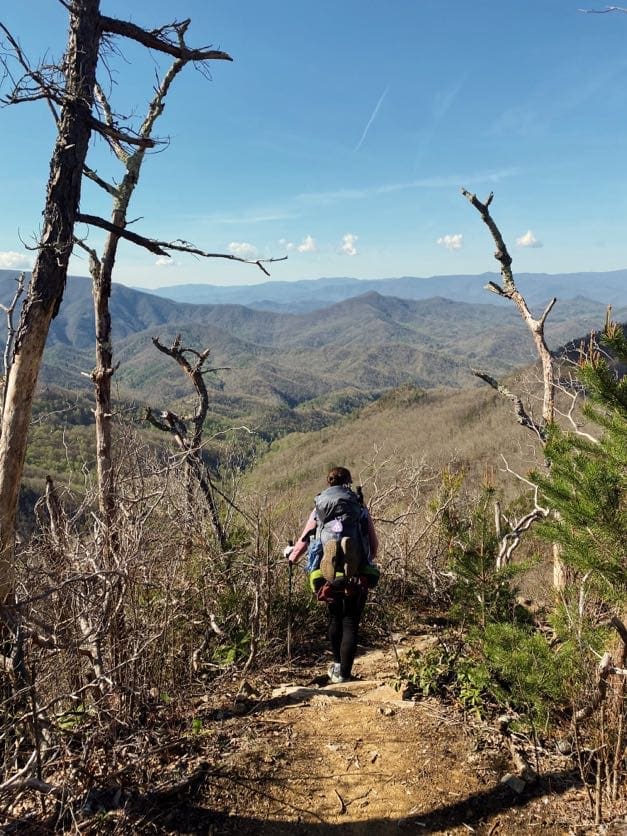
Meital putting in some miles on the AT
While hiking, food occupies most of my thinking time as I jump over fallen trees and hop from rocks. If I’m not currently eating, I’m usually planning about my next snack or meal, whether it’s a bar hastily eaten as I filter more water or a gluttonous fast food meal on the rare town day. Nothing tastes as good as the Dairy Queen Blizzard you’ve been dreaming about — and salivating over — for three days before you hit town. Food becomes a mantra and a motivator.
Still, many, if not most, of our people will not comprehend our choices: to hike, what we eat, and how we do it. I hope this list of myths and explanations regarding thru hikers, ranging from hiker hunger to food storage, can dispel some of that disbelief. At least it will help me better explain to the next grocery store clerk why finding the 710 calorie glazed honey buns is more important than the 300 calorie ones.
Myth #1: Eat the same foods throughout the whole hike
Several decades ago, an economical way to thru hike was to send resupply packages all the way up the trail. This meant, however, picking your meals well in advance. This disregards your change in taste, hunger and what you crave while hiking.
Take hiker hunger, for example. After several weeks on trail, I became hungry. All. The. Time. Turns out that hiking over fifteen miles a day, every day, creates a different type of metabolism that has to be sated. Taste is also important. I started the trail chomping down on chocolate chip Clif bars. A few hundred miles in and the sight of a Clif bar made me nauseous. I have had to pick my way through the granola bar aisle in order to keep things exciting.
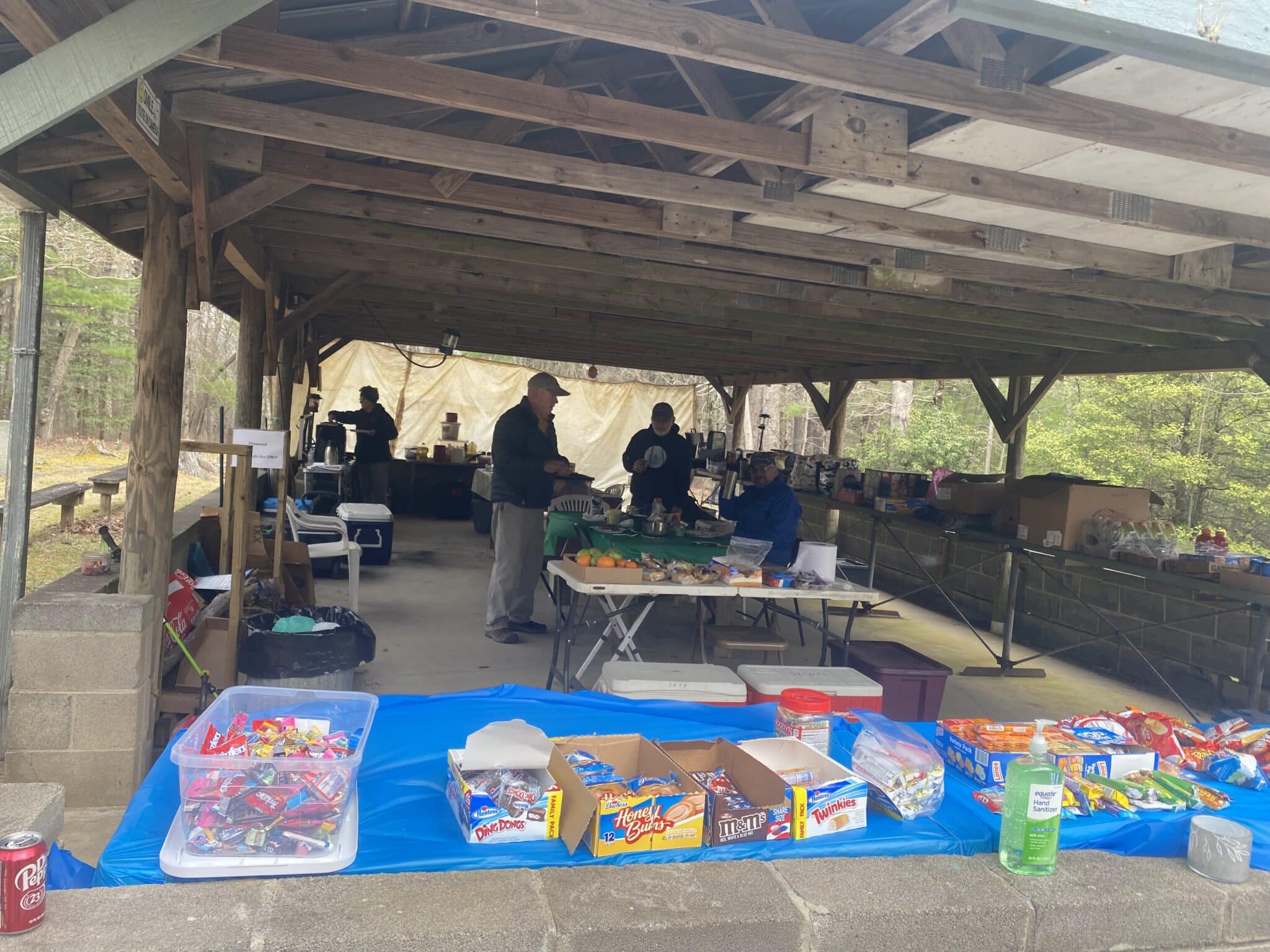
Some trail magic at a rest stop along the AT
Big miles and long days of hiking lead to cravings that you do not even know you had. I crave the fresh crunch of cucumbers, and have become accustomed to packing one out the first night after a resupply. Fresh peppers are eaten like apples. Hiking the Appalachian Trail also lets me indulge in the junk foods that were off limits when I was younger: snack cakes, doughnuts and sugary candies are key hiker fuel.
Myth #2: Food carries are long
I distinctly remember a relative, when hearing about my upcoming plans, exclaimed, “How will you carry five months of food?” A common misconception is that we are carrying weeks worth of food at a time to survive in the remote wilderness.
In reality, carrying that much weight would make thru hiking nearly impossible. And in the case of the Appalachian Trail, there is a road crossing every eight miles, on average. This means that five days is the most days of food I’ve had to carry, with most of my resupply points being every two to three days.
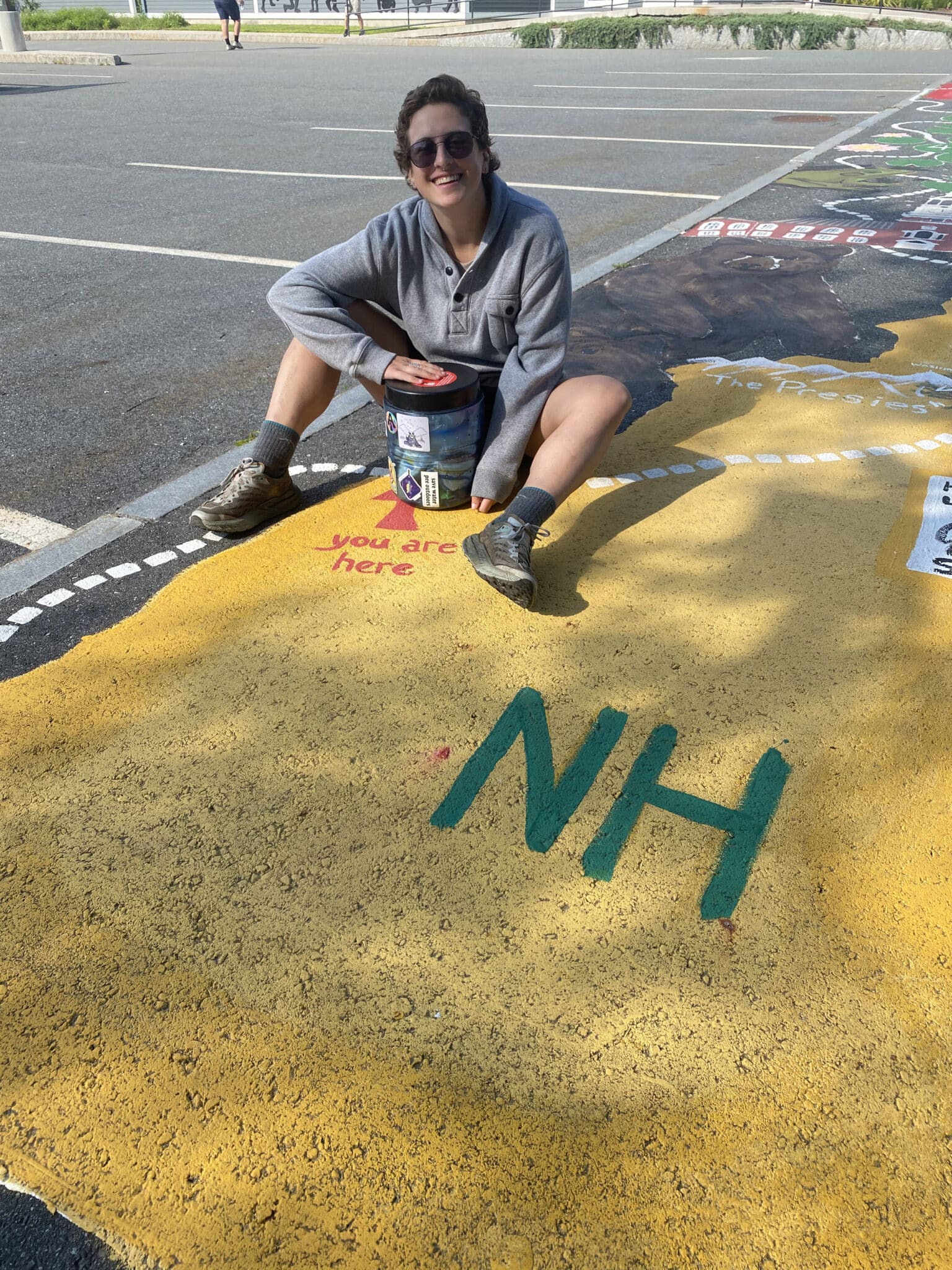
Crossing through towns on trail will mean rushing to the nearest grocery store, gas station mart or general store to pile our carts with sugary treats, beef jerky and whatever else we may have been craving the last few days. You are only limited by your creativity, and the amount of food you’re willing to carry!
Myth #3: Food storage is difficult
Growing up near Shenandoah National Park, I was familiar with the chores associated with backpacking. This included how to store our food at night. With black bears and the cadre of “mini bears” ranging from mice, rats, squirrels, and the odd porcupine, food and other scented items have to be safely stored. Back then, this was a bear hang over a high branch.
Watching and then helping my dad throw many bear hangs, I was dreading the difficulty of doing so solo. When it came time to plan my Appalachian Trail hike, I realized there were easier and safer ways to store my goodies at night.
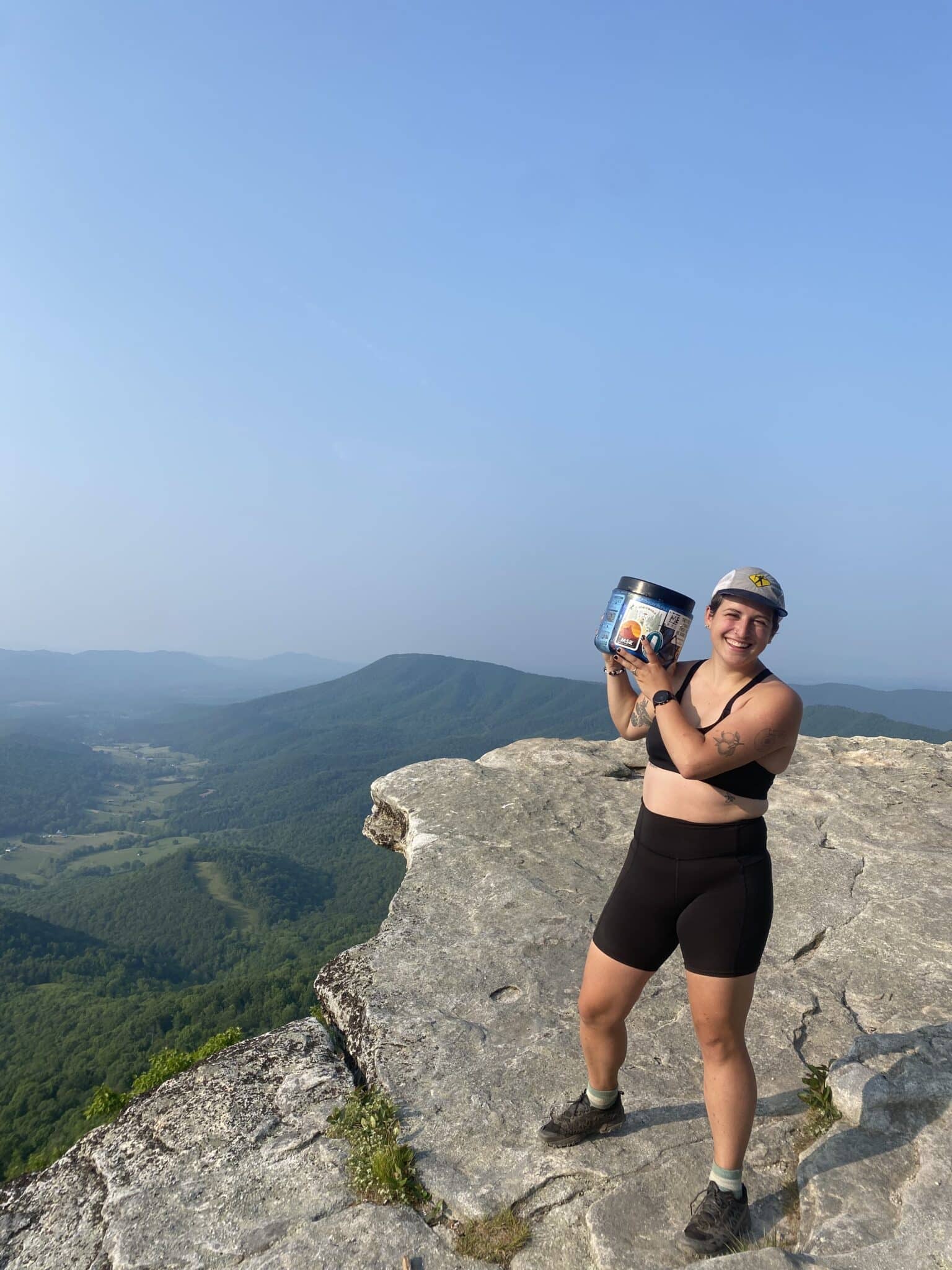
Meital’s BV450 with a view!
I have really enjoyed the bear canister, for ease of mind and general ease of use (the BearVault 475). I originally started the trail with the 450 size, but my hiker hunger quickly outpaced my ability to fit a resupply easily into the canister. Sizing up meant I could fit 4-5 days of “hiker hunger” food and scented items. When I go on shorter backpacking trips that are not long trails in the future, I may be able to fit up to seven days of food!
I can easily screw the lid on and off, and when it comes time for bed, I walk 70 big steps away from my tent and set it down. That’s it!
Myth #4: Eat dehydrated meals—every meal
In recent years, backpacking food has graduated from military-style MREs to increasingly creative dehydrated meals. Close friends often asked if I would buy different branded meals in bulk. Rip the top off, pour boiling water in, and you’re good to go. Why not eat them for every meal? However, the brand name meals can be expensive, and funding a thru hike means saving when I can.
If you have the ability and patience (and already own a dehydrator), planning your meals in advance may be the way to go. The pre packaged backpacking meals are a rare treat for the rainy, cold days when I want no dishes and all I have to do is boil water for a hot meal. This means my favorite dinners have been Kraft macaroni and cheese (with extra cheese!) and summer sausage thrown in, or ramen “bombs” combining mashed potato packets and spicy chicken instant ramen.
When it comes down to it, a thru hike becomes a world of its own. The shift in our daily lives is often unrecognizable — and hopefully this dispels some of the misconceptions your parents, family and friends may come to you with.
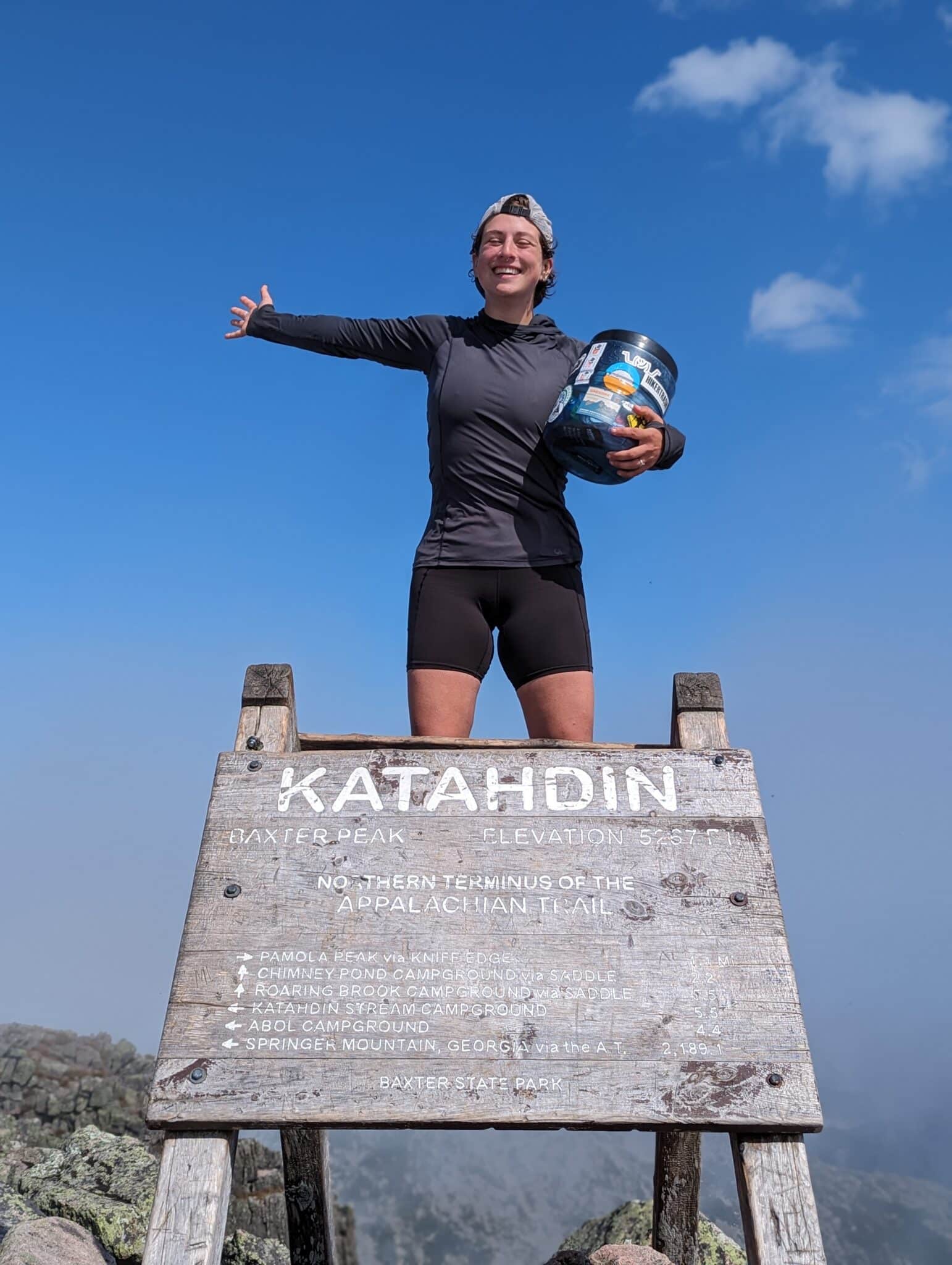
Meital completes their thru-hike with a BV475 in tow.
Author Profile

Meital Kupfer
I’m Meital Kupfer (they/them) and I’m an avid hiker and climber. I’ve spent the last seven years living and working in Uganda, but hail from Washington, DC. While I work in the development sector (focusing on gender, technology and climate change), I am a strong supporter of making the outdoors more equitable for all. When not examining spreadsheets or conducting research, I can be found camera in hand, or curating my next favorite playlist.


